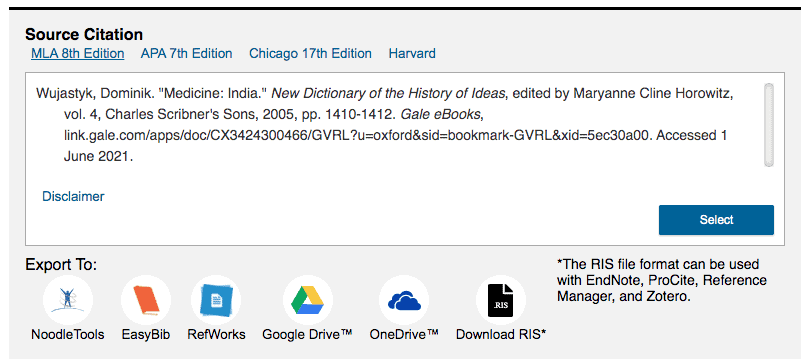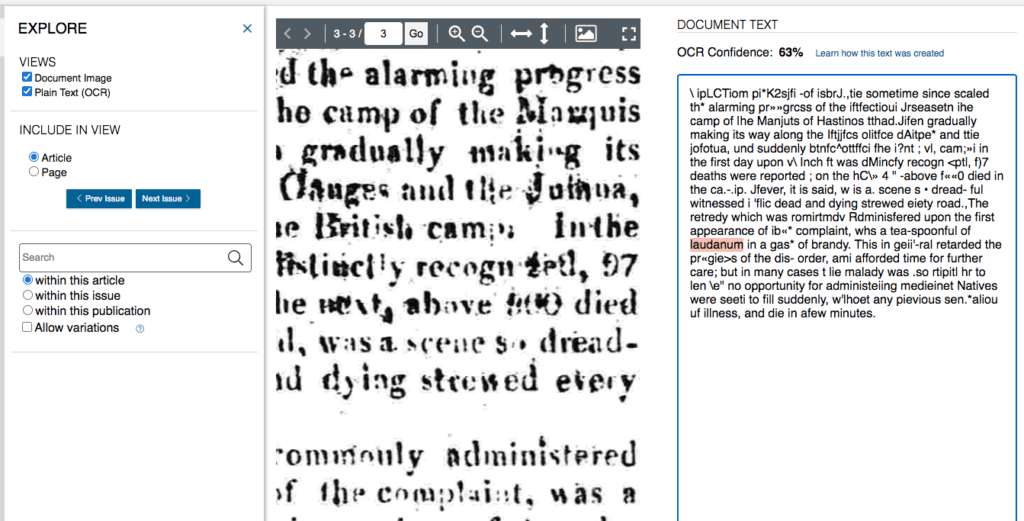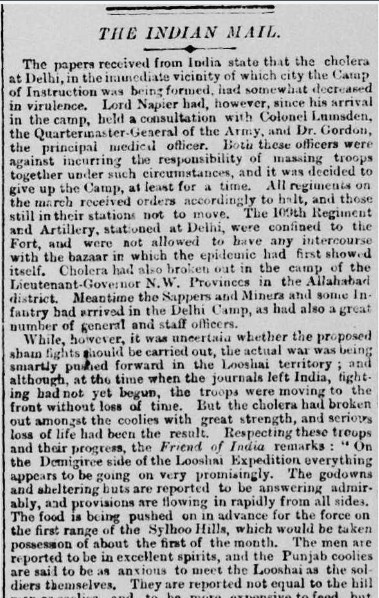|By Jagyoseni Mandal, Gale Ambassador at the University of Oxford|
I am a doctoral student in the department of the History of Medicine at the University of Oxford. My PhD topic focuses on infectious disease in colonial India. A major part of it looks at the scientific responses to, and public perception of, infectious disease during this time period, looking at the situation in both Britain and India. The Gale Primary Sources database acts as a major source corpus for my thesis. In this blog post, I will give an overview of how I use these primary sources, so that other researcher in my field – and beyond! – can understand how they may use Gale’s primary sources in their own research.
My interest in studying infectious disease in India
Looking back, I can’t put a finger on one particular incident that inspired me to research this topic for my PhD. There was no eureka moment which made me go “This is it! I’ve decided what I want to work on for a substantial amount of time!” Rather, I believe it was the years I spent growing up in India, often hearing about the impact of infectious diseases in the past. Colonial India was “plagued” by several infectious diseases such as Cholera, Malaria and others. I was also intrigued by my gradual realisation that different people can experience the same disease in very different ways, and that this is determined by several factors such as their societal positions, ethnic group, class and even gender. I am looking at this, and the various developments made in the management of disease, from a multifaceted perspective; public perceptions and scientific responses to these diseases form a major part of my thesis.
Starting with an overview of secondary literature
I turned first to Gale eBooks. PhD students are always encouraged to read secondary literature before venturing into primary sources. This not only gives us an idea about what has already been written relating to one’s topic, it also leads one to new primary sources! And many of which can be obtained from Gale Primary Sources! I began with a very simple search using the phrase “History of Medicine.” In the results, I came across a book chapter that is significant to my research called “Medicine: India” by Dominik Wujastyk. It’s in the eBook New Dictionary of the History of Ideas, edited by Maryanne Cline Horowitz. This resource included an overview that helped me determine whether it will be significant to my research. (This is particularly helpful because often PhD students spend ages reading a source only to determine it won’t prove useful to their research!)
Within this chapter there is a section called “Modernisation and Globalisation”’ which talks about how indigenous medicine assumed a particularly important role during the independence struggle in India, a point useful in my research. Indigenous medicine practitioners highlighted indigenous medicines such as Ayurveda, Unani and Siddhva in an attempt to align it with the nationalist movement gaining momentum in this period. It is also extremely satisfying that Gale automatically provides researchers with a range of source citation formats to choose from – MLA, Chicago, Harvard or APA – when citing a source in their research.

Wujastyk, Dominik. “Medicine: India.” New Dictionary of the History of Ideas, edited by Maryanne Cline Horowitz, vol. 4, Charles Scribner’s Sons, 2005, pp. 1410-1412. Gale eBooks, https://link.gale.com/apps/doc/CX3424300466/GVRL?u=oxford&sid=bookmark-GVRL&xid=5ec30a00
Newspapers reflect and develop public perceptions
Newspaper reports form a major part of my research as they not only talk about public perceptions, but also inform and develop it. The Gale Primary Sources available at Oxford University include British Library Newspapers. I came across a fantastic article published in the Morning Post (London) on May 8, 1818 entitled “Infectious Disease in India”. It talks about the “alarming progress of infectious disease” in the Indian colony that is gradually making its progress along the banks of two of its major rivers, the Ganga and Jamuna, that led to “the dead and dying stewing every road.”
Importantly, the article also talked about remedies that were being commonly administered, such as a “teaspoonful of laudanum in a glass of brandy.” Discovering this article in Gale Primary Sources was useful for several reasons. Firstly, it showed me that infectious disease in India were being reported in local British newspapers, and as far back as 1818. Secondly, it gave me a starting point to research a remedy that was commonly administered. The additional technology offered on the platform was also very helpful for another reason. Gale Primary Sources gives researchers the option to view both the document facsimile image and the plain text OCR – side by side. This was very useful in this case as the OCR technology has comprehended the word “laudanum” that was quite blurred in the original document.

“Multiple Classified ads.” Morning Post, 8 May 1818, p. [1]+. British Library Newspapers, https://link.gale.com/apps/doc/R3209709825/BNCN?u=oxford&sid=bookmark-BNCN&xid=10994184
The importance of illustrations
I used an illustration of the Malaria causing mosquito as the header image of this blog post for several reasons. It’s from the article titled, “Man Against Mosquito – A Fascinating Chapter From Medical History,” which published in the Evening Telegraph in the year 1935. Illustrations – at a time when illustrations were less common in newspapers than they are today – are always significant, and in this case could show that certain images were already commonly associated with disease. The use of such an image shows that a scientific approach was taken to disease and its management.
Tracing developments around disease
Gale Primary Sources also contains The Telegraph Historical Archive from 1855-2016 which contains innumerable articles significant to my research. For example, the below article from December 30, 1871 states, “The papers received from India state that the cholera at Delhi, in the immediate vicinity of which city the Camp of Instruction was being formed, had somewhat decreased in virulence.” If we look at reports in the same newspaper in the preceding years, we would notice that it is possible to trace the developments around the disease, the measures taken by the government as well as scientific developments. The Telegraph Historical Archive is an important source to trace the trajectory of debates and developments around the disease. It also offers interesting comparisons to current situations as the newspaper is still in print today.

In this post I have talked about the types sources that are significant to my research, and tried to show how such sources can be approached and analysed from different angles. This will hopefully help a fellow researcher understand the various ways in which Gale Primary Sources can make their research easier, especially when there is a deadline looming!
If you enjoyed reading this post about infectious disease management in colonial India, you might like:
- Indentured Indian Workers and Anti-Colonial Resistance in the British Empire
- Tales for the ‘Every-day Reader’: Winston Churchill and the ‘War in the Indian Highlands’
- The Homophobic AIDS Crisis of the 1980s
- How The Gale Digital Scholar Lab Made Digital Humanities Less Daunting
Blog post cover image citation: Illustration of the Malaria Causing Mosquito from: “Man against Mosquito.” Evening Telegraph, 18 Mar. 1935, p. 2. British Library Newspapers, https://link.gale.com/apps/doc/JF3237562531/BNCN?u=oxford&sid=bookmark-BNCN&xid=2f557284


